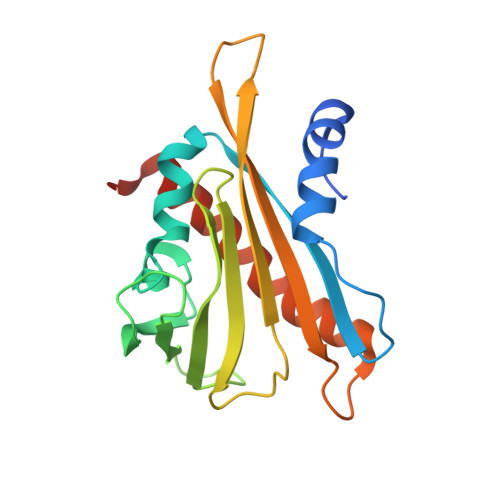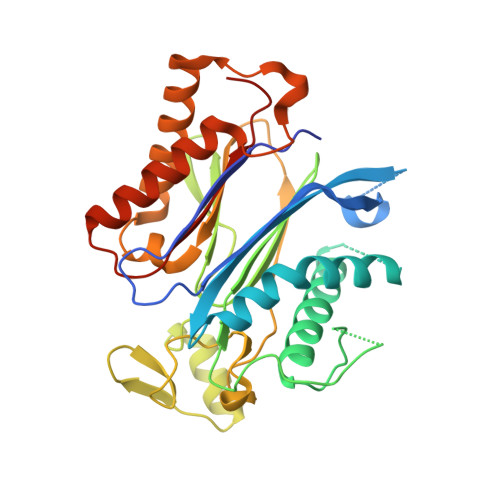Rapid biosensor development using plant hormone receptors as reprogrammable scaffolds.
Beltran, J., Steiner, P.J., Bedewitz, M., Wei, S., Peterson, F.C., Li, Z., Hughes, B.E., Hartley, Z., Robertson, N.R., Medina-Cucurella, A.V., Baumer, Z.T., Leonard, A.C., Park, S.Y., Volkman, B.F., Nusinow, D.A., Zhong, W., Wheeldon, I., Cutler, S.R., Whitehead, T.A.(2022) Nat Biotechnol 40: 1855-1861
- PubMed: 35726092
- DOI: https://doi.org/10.1038/s41587-022-01364-5
- Primary Citation of Related Structures:
7MWN - PubMed Abstract:
A general method to generate biosensors for user-defined molecules could provide detection tools for a wide range of biological applications. Here, we describe an approach for the rapid engineering of biosensors using PYR1 (Pyrabactin Resistance 1), a plant abscisic acid (ABA) receptor with a malleable ligand-binding pocket and a requirement for ligand-induced heterodimerization, which facilitates the construction of sense-response functions. We applied this platform to evolve 21 sensors with nanomolar to micromolar sensitivities for a range of small molecules, including structurally diverse natural and synthetic cannabinoids and several organophosphates. X-ray crystallography analysis revealed the mechanistic basis for new ligand recognition by an evolved cannabinoid receptor. We demonstrate that PYR1-derived receptors are readily ported to various ligand-responsive outputs, including enzyme-linked immunosorbent assay (ELISA)-like assays, luminescence by protein-fragment complementation and transcriptional circuits, all with picomolar to nanomolar sensitivity. PYR1 provides a scaffold for rapidly evolving new biosensors for diverse sense-response applications.
Organizational Affiliation:
Department of Botany and Plant Sciences, University of California, Riverside, Riverside, CA, USA.





















